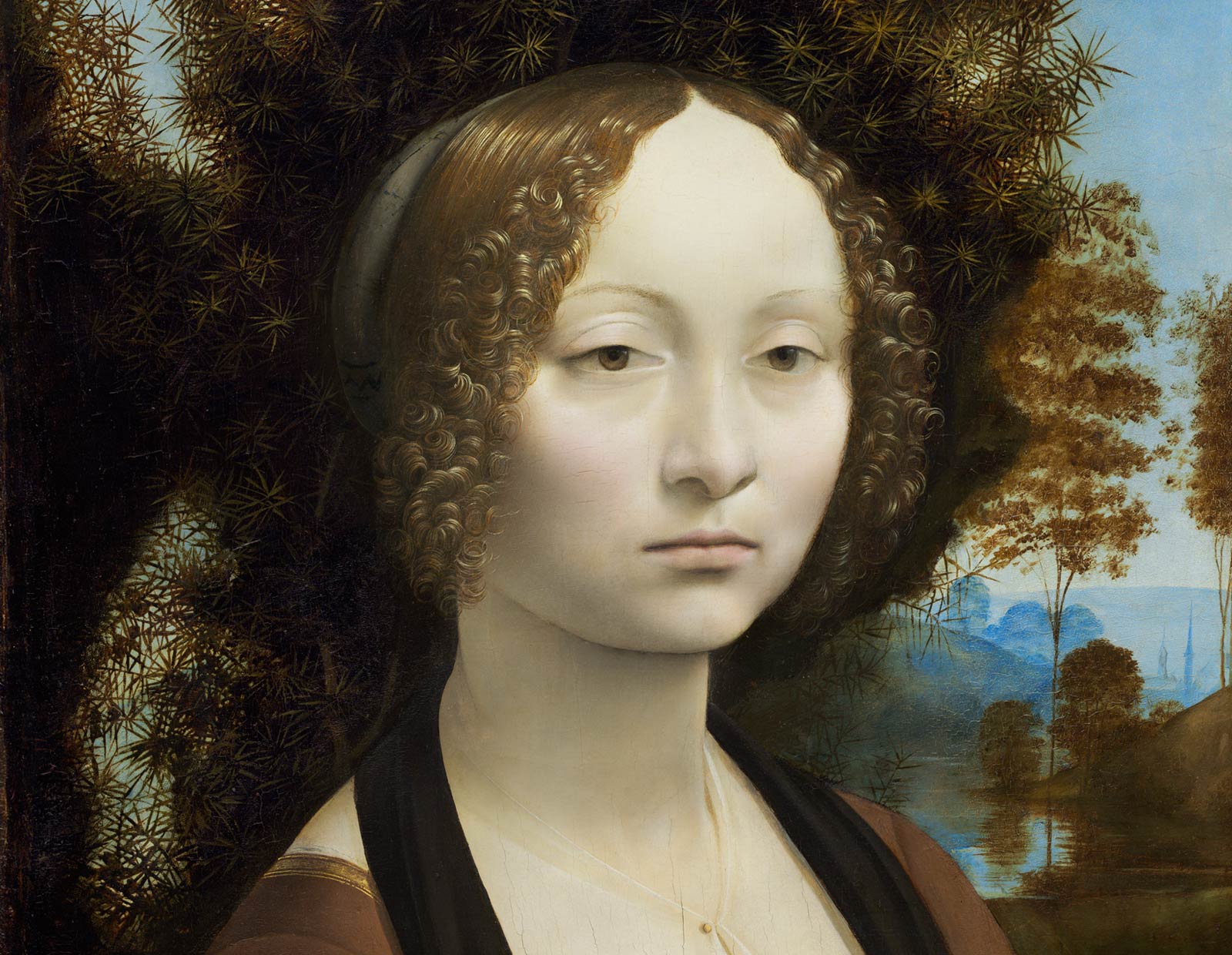Ginevra is known to have had several admirers who composed poetry in her honor and entreated her to share own verse with them. Among them was Lorenzo de’Medici, whose elite family was known for its art patronage. Even more significant to Ginevra was Bernardo Bembo, the Venetian ambassador to Florence. It may have been he who commissioned her portrait to celebrate—and substitute for—the object of his admiration and esteem. The painting’s reverse side,
Flawless chalk-white skin, porcelain-fine features, and a reserved, somewhat impenetrable expression reflect the refinement of the 16-year-old
Why was this young woman’s likeness painted? One possibility is that the commission was occasioned by her betrothal. Ginevra married Luigi Niccolini in 1474. Another likelihood reflects a cultural phenomenon of the Italian Renaissance period—platonic love affairs between well-mannered gentlemen and ladies. Such affairs, often conducted from afar, focused on effusive literary expressions that displayed the courtier’s and lady’s sophistication.

Leonardo da Vinci, Wreath of Laurel, Palm, and Juniper with a Scroll inscribed Virtutem Forma Decorat [reverse], c. 1474/1478, tempera on panel, Ailsa Mellon Bruce Fund, 1967.6.1.b
An early work, completed when
About the Artist
Although few paintings by Leonardo exist in the world today, among them are the best-known and most highly revered paintings in the Western tradition: the Mona Lisa (Musée du Louvre, Paris) and The Last Supper (Santa Maria delle Grazie, Milan). Despite these high achievements in painting, Leonardo would likely still be known to us today for his extraordinarily versatile intellect and creative mind. Equally skilled as a sculptor, architect, urban planner, inventor, anatomist, military strategist, and visionary who anticipated the invention of aircraft, submarines, and other technologies centuries before their invention, he was among the most influential figures of the Renaissance in Europe.
More Works by Leonardo da Vinci
in the National Gallery of Art Collection

Leonardo da Vinci, Sheet of Studies [recto], probably 1470/1480, pen and brown ink over leadpoint with blind stylus on laid paper, The Armand Hammer Collection, 1991.217.2.a

Leonardo da Vinci, Study of a Madonna [verso], probably 1470/1480, black chalk on laid paper, The Armand Hammer Collection, 1991.217.2.b
Explore all Collection Highlights

